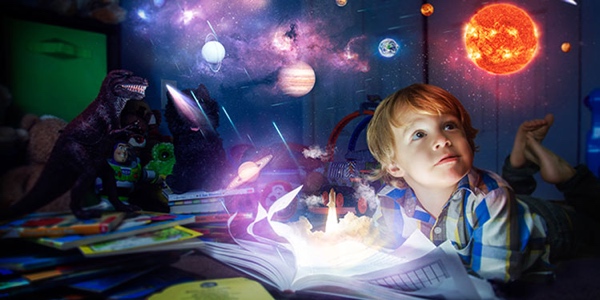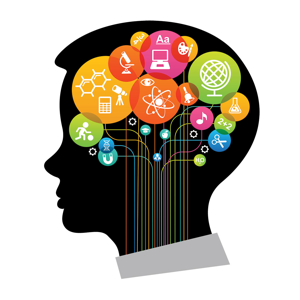
Unlike video games and films, a reading experience with Storyplay’r without moving images involves an active approach on the part of the child and thus stimulates their cognitive and creative abilities.
Reading puts more strain on the brain through an active cognitive process
When your child watches a film, they « receive » the images and sounds in a very passive, effortless way. Following the story makes relatively little use of their cognitive abilities because many things are already said, pre-machined, shown, and explained through speech, sounds, and moving images.

In contrast, when the child is reading a book on Storyplay’r, they have to decipher the text, recognize the words, understand the sentences, find the meaning, and finally understand the story. The child can be helped by the illustrations, but the process is still very active.
Reading therefore requires a greater effort from the child’s brain, hence the term « active cognitive process ».
Note: This is also the case for adults, which is why it is often easier to sit in front of a film, a TV show, or a cartoon than to read a book…
On Storyplay’r, the images are inanimate to maintain a true reading experience
This is one of the reasons why, on Storyplay’r, we don’t transform books: we don’t add any animation, any multimedia enrichment, any interactivity. The page of the book in Storyplay’r looks exactly like the double page of the paper book.
It is a voluntary and militant approach on our part so that reading with Storyplay’r has the same characteristics as reading a paper book: active approach for the child, slow rhythm, leaving room for the text, for the imagination…
Indeed, when the images are not animated, the child will :
– attach more importance to the text describing the action and integrate more vocabulary;
– have the time and leisure to learn to read, decipher the text, look at the pictures, listen to the audio version;
– bring the characters to life in his or her head and thus exercise the imagination.
Reading slows down the flow of information and the over-stimulation of the senses
In today’s fast-paced world, a book is a chance to slow down the flow of information and the over-stimulation of the senses.
What differentiates reading with Storyplay’r from video games or cartoons is also the pace at which the images scroll, the superimposition of visual and auditory stimuli. In one minute of a cartoon or video game, much more happens to the senses than in one minute of reading. With Storyplay’r, the intensity of the sensory stimulation is much lower. It’s a calmer, quieter experience.
The first advantage is that reading with Storyplay’r will tend to calm your child rather than excite them. Reading will channel them and help them focus.
The second advantage is that the lower intensity will leave room for your child’s mind to react to the words and images, to interpret and understand what is written or said, to imagine what is not said. It is also in this sense that reading is said to develop the imagination.













